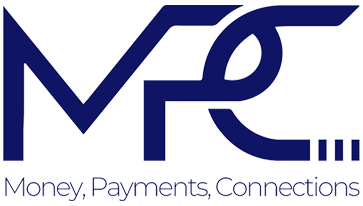ATLANTA — A joint initiative among five separate companies, including Uber Freight, to pay drivers as fast as two hours after receiving documentation is several months old, but some of its participants laid out the specifics to an audience of fintech professionals at a key conference.
What Uber Freight (NYSE: UBER) is calling LightningPay was announced in October. Since the scheduled representative from Uber Freight was not able to join the panel at the Mobile Payments Conference at the Westin Atlanta Perimeter North hotel due to illness, panelists from one company with a well-known name — Mastercard — and one rising star in the payments ecosystem — Branch — were tasked with explaining their product that, if successful, could put a serious dent in factoring.
Atif Siddiqi, the founder and CEO of Branch, was joined by Luis Silva, the vice president of digital partnerships with Mastercard, on the panel. But LightningPay is actually a project of five total players. Joining Branch, Mastercard and Uber Freight, Marqeta is a payments platform that already had been partnering with Uber Freight on fuel payments to drivers, and Evolve Bank & Trust, which provides the cash for the rapid payments. (In its announcement of the initiative last fall, Marqeta described its role as the “card-issuing platform.”)
Branch’s role, according to Siddiqi, is primarily as the software provider to LightningPay but also the administrator of “digital wallets,” where Uber Freight drivers would have their payments deposited.
Uber Freight, in its own online information about LightningPay, doesn’t just say it pays in two hours. The offering receives the capital-letters treatment and is dubbed “2-Hour Settlements.”
Siddiqi told the audience that most drivers now are paid on a 30- or 60-day basis, though it was noted to him that it is likely the vast majority of drivers are factoring to be paid faster than that but take a “haircut” in a reduced payout. On its website, Uber Freight said it now pays a driver’s factoring company in 30 days, so the driver is paid faster by the factoring company, with that company then assuming the extra wait time. But it also said users of its current QuickPay program are paid in seven days or less.
Siddiqi said factoring “has its role in the ecosystem,” but he then offered a combination of criticism of factoring and praise for LightningPay. “What we’ve looked at is how do you create this very frictionless experience for owner-operators so they can get started from day one,” Siddiqi said.
Factoring, Siddiqi added, has “a lot of delays in submitting paperwork, a lot of delays around the underwriting.” He also was critical of factoring relationships that tie a driver to a certain factoring company for a designated period.
“These are some of the things that differentiate us from factoring,” Siddiqi said.
The marketing of LightningPay includes a section of the Uber Freight app with a link that takes the user directly to Branch, Siddiqi said.
Asked how any of the partners in the initiative get paid, given there are no fees extracted from the payments going to drivers, Siddiqi said exchange fees, paid by the merchants where the Uber Freight/Mastercard card is swiped, provides a revenue stream for LightningPay.
With no Uber Freight representative able to attend the conference, describing its interest in the initiative was necessarily second hand. But Siddiqi said none of the exchange fees collected from merchants are distributed to Uber Freight. Its interest is in making its digital brokerage offering more attractive than the competition.
“(Uber Freight) comes out and says to new operators, here is our new value proposition,” Siddiqi said.
While no specific figures were given on the number of carriers that Uber Freight has signed up for LightningPay, Siddiqi did say that within several months of joining the program, drivers using the product were taking 30% more loads than before.
“They are more productive if they know they are getting their money today,” he said.
While the LightningPay offering on its surface looks like it could damage factoring, the latter industry is attracting new entrants. Beyond the acquisition pulled off last year by Triumph Bancorp in buying HubTran (NASDAQ: TBK), and some belief that it is ripe for consolidation (in part to take on the behemoth of Triumph), factoring is seen as enough of an opportunity that just last week a group of factoring executives launched a new factoring company called Transcap.

LightningPay’s focus so far has been on single owner-operators, according to Siddiqi. But Branch and the other partners are now studying how it can be expanded to smaller fleets, which he defined as five to 20 trucks.
“Their needs might be different,” said Siddiqi, noting that tailoring the suite of products to smaller fleets will need to be developed.
Mastercard’s role is not just to brand the card that Uber Freight users will be using. (The digital wallet is administered by Branch, with funds paid into it coming from Evolve Bank.)
For example, Silva said Mastercard’s current fuel card with Uber Freight can be activated using biometrics at the pump, eliminating the need for a driver to have to go into the store for approval. That sort of technology can also be brought to the LightningPay product, “and that differentiates value,” Silva said.
Discounts from using the Uber Freight card are available at Love’s, with other outlets possibly being added in the future, according to an Uber Freight summary of its card offerings including LightningPay.
Editor’s note: John Kingston, the author of this article, moderated the panel.







